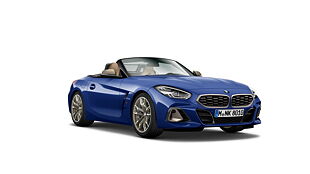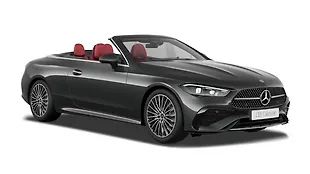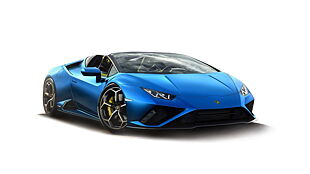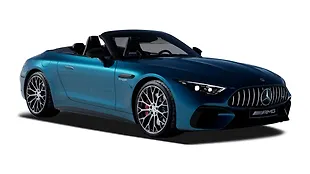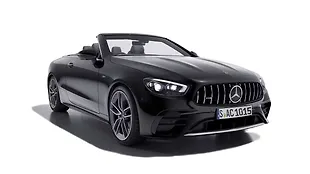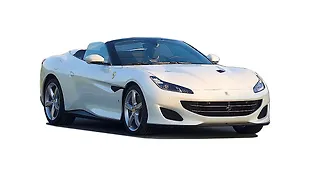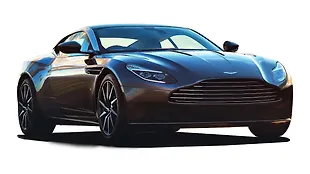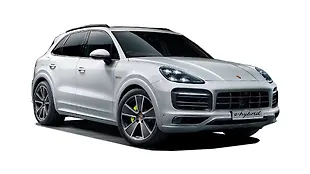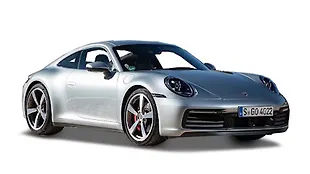Introduction

As an automotive enthusiast, one tends to read a lot about how to drive better. The fastest drivers in the world are racing drivers, so naturally enthusiasts devour information on how to drive around a racetrack. Ask any enthusiast about this, and (s)he’ll deluge you with terms like “racing line”, “late apex”, “trail braking” and “rev matching”. When the average Joe gets confused or plain bored, the enthusiast starts digging deeper and the desire to see if these things work for themselves as well crops up. Cue wild drives on twisty back roads, handbrake-yanking shenanigans in deserted parking lots, or in the case of a lucky few, a trip to the racetrack.

I have to count myself in that small latter group now: I’ve been on a racetrack, but always with a road car. The difference between a road car and a race car is so big, it is like comparing a commercial airliner used for domestic air travel to a Eurofighter Typhoon. It takes a particular set of skills to operate one to its maximum, and if you go beyond its limits, there is no howling tyre and progressive understeer to warn you of impending danger, or even ABS and EBD to avert it. You’re either having the time of your life or praying that you retain it as you stomp on the brake and hope you stop without the help of a tyre barrier. These cars cost a lot of money, and manufacturers are understandably reluctant to hand them over to people – like automotive journalists – that are only human.

Michelin, however, does things differently. They organise what they call the “Pilot Experience” in Kuala Lumpur, Malaysia every year and invite auto journalists from around Asia to participate. The first thing you should know is that you cannot buy your way into the Pilot Experience. There are no paying customers here, only journalists picked by Michelin to get their hands on some genuine race cars and have fun while discovering more about Michelin’s involvement with motorsport. The event has been held for the last eight years, and over 2700 participants have been through this day of fun and learning.

The track is the Sepang Formula 1 track in Kuala Lumpur. It is divided into two sections, and there is a third track set up for a rally car in the area outside the track. The introduction was brief: we were given a background on the event, and it was almost no time before we were suiting up. Yes, in proper one-piece driving suits with Sparco driving shoes and gloves.

It didn’t matter that I looked like a blue Bibendum myself – so this is what racing drivers feel like! (Hot, sweaty and it’s impossible to take a leak.) Minor drawbacks aside, we were taken down to the pits, and told to line up at the doors, facing the doors but we weren’t told why. Our natural inclination to disobey orders coupled with the sight of a beautiful Porsche GT3 Cup parked with us meant that some of us missed the great unveiling – the pit doors went up and there was lined up the entire set of cars we were to drive, including the instructor cars and the instructors. What a sight it made! But that wasn’t it – seconds later, we could hear the roar of a big engine approaching, and what should zip past but an Aston Martin Vantage race car! We were then divided into three groups for the three cars that we were to drive during the day.
The Formula Renault Car

There are three sections to Michelin’s day of fun: the Formula Renault, the Clio Cup, and the rally car experience. All the cars were race cars in one form or another, and we started with the fastest of them all: the Formula Renault. This is a car that has nearly 200 horsepower – it isn’t much even by hot-hatch standards overseas, and neither is that figure daunting to an automotive journalist because the affordable set of premium cars all approach that figure. What is intimidating is the fact that it weighs 480kg – almost half that of a Maruti Swift. I weigh over 20 per cent of the car’s weight – that’s like adding three normal-sized people to the aforementioned Swift. Only in this case, the effects will be far more evident. Power-to-weight ratio and all that. It gets to 100kph from a standstill in 3.5 seconds, this car, so yes, it is plenty quick.

On to the practical side of things: we were given a crash course in the circuit we’d be using by being taken around in a massive people mover the size of a Force Traveller. That was certainly one of the more novel experiences I’ve had in my life. We were shown the cones that helped us with the entry and apex for the corners enroute, and the gear selection and braking markers for those corners. We then returned to the pits where we were given a little training in a simulator, so we didn’t have to deal with things going pear-shaped while hurtling around the track. Also, the cars were limited to a lower redline compared to a full-blown racing car. Training done, we were lined up to take turns in the Formula Renault with a little efficient fussing from the Michelin girls to make sure we were properly attired and that our gear was fitted properly.

At the risk of sounding repetitive, it is worth mentioning that in a racecar, the overwhelming impression is one of lack of weight. Not in terms of the lack of a windscreen or rear seats; the wheel and tyre combination of the Formula Renault is lighter than that of our 150cc motorcycles’. The fuelling isn’t dumbed down to eliminate jerks or reduce emissions; you prod the throttle and the engine snarls at you. Get off the right pedal, and it feels like braking in a regular hatchback thanks to the back-torque from the fuel-starved engine. A formula car is the essence of a car – it is tyres, suspension, steering, driveline and a way to stay within the car without getting left behind. The thought of driving one is thoroughly exhilarating and intimidating in equal measure.

With these thoughts running through my head, with a little worry at the fact that my six-foot plus frame was giving me a little trouble like my right toe (at the end of my size twelve foot) fouling against the steering column when moving from the throttle to the brake, and my knees getting in the way of my wrists while turning (no power steering, remember, so both hands on the wheel is an important technique) my car was fired up. A push from an ATV was given to get the car rolling and minimise the chances of stalling, and off I went behind the pace car in front. Whenever I get into a new car, I check two things as soon as possible: the steering, for the play and quickness, and the brakes for obvious reasons. The pit lane was as good a place as any to check the steering, I thought, and started turning the wheel... and the car started turning immediately. There is no play in a Formula Car’s steering, folks – something to remember if you should ever get into one of them. Next, the brakes – with only 580kg (with me in the car) to haul to rest, they did their job magnificently. No clutch needed, sequential shifter on the right, and shift up when the LEDs on the steering wheel go red.

Out of the pit lane and on to the track, and turn one was already in my face. I turned the wheel over and – horrors! – came up short with my wrist against my knee. There was no time to think it through, so I took the lower hand off the wheel and steered one-handedly through the turn with a prayer on my lips and voila! I made it through just okay. Thank goodness for all the pushups I did on the run up to the event. Turn two is a twin of turn one, so off came the other hand from the wheel, and steering was resumed with the left. Out of turn two and foot down for the flowing turn three. This was the first part that I got to sample the speed of the car; you’re so low down and the wind starts buffeting the helmet, so you’re well aware that you’re going quite fast despite the lack of the speedo. But always, that engine roaring away behind my head overrode all other sensations until turn four, where I managed to turn in relatively quickly – and found myself pinned to the left side of the cockpit, thankful that the seatbelt and my girth made it impossible for me to move more than a few millimetres sideways. Then two sweeping turns, a tricky last corner past the pit lane entrance and onto the straight where you can explore the car’s top speed. Braking markers are laid out at the end of the straight, watch out for traffic from the pitlane, and turn one was back.

All too soon, the first session was over after a few laps. I was raring for another go, and to our astonishment, we were told that yes, there was a second round coming up. A seemingly interminable wait followed by the hurried, efficient ministrations of the Michelin girls and I ready for another go. Back into the car, the push start, and off I was again, only this time I was determined to be faster. I was, too, until another journalist came barrelling by behind his pace car, and I realised that I was probably the snail of the group! With renewed confidence in the car’s abilities, I started driving faster, and my pace car’s driver responded magnificently, driving at a pace that urged me to go quicker without haring off into the distance. Many laps later, I was satisfied that I pushed my limits (nowhere near the car’s limits, however) and the session was terminated. Everything that I’d ever read or seen about a Formula Car is true, but after driving it so hard, the front tyres told us a different story: they were worn only on the insides, which means that we weren’t driving it hard enough to even load up the suspension properly.
The Citroen C2 Rally Car

Next for us was the rally experience in Citroen C2 rally cars. These were front-drive cars that had 150 horsepower and weighed 650kg, a marked difference from the Formula car. We were given a course briefing (“please slow down over the bridge, we don’t want you falling into the stream”) and told how to deal with slip. I’ve never had a car’s tail step out in my life, so this was going to be equally new for me. We were sat with a co-driver who would yank on the handbrake as required, and off we were sent.

There wasn’t much to do by way of changing gears – we had to stick it in second and leave it there – but the amount of steering input I had to give my car was incredible. It seemed like the tail was forever stepping out of line, and on the first trip around the wonderful sweeping left-hander at the back of the course, I panicked – but the car drifted beautifully. Armed with confidence imparted by the lack of a spin or crash, the subsequent laps got better. Again, there was a second session, and by the end of it I was just about getting the hang of getting the car around the track smoothly but it was time up. My co-driver said a single word to me before I began the contortions necessary to exit a car with a full roll cage: “good”. Hey, maybe I really was getting better at this!
The Renault Clio Cup

It was then back to the track for our final drive: the Clio Cup cars. The Renault Clio is a little bigger than a Honda Jazz, but these were also stripped-out racecars that weighed 1000kg, the same as a Swift, but with 220 horses going to the front wheels through a sequential gearbox. 100kph comes up in a staggering 4 seconds. The Formula Renault was an object of precision, the Citroen C2 was like an excited puppy, but the Clio was alive in a very different way.

There were little shudders that went through the car every time you ran over a ripple on the track, and it revved so high! The grip from the slick tyres was so immense that I found myself going faster and faster through the turns – and that’s where I made my first mistake. In a tight left-hander, I found myself going too fast and got off the throttle in a hurry and the tail stepped out. Normally I would have taken the advice given at the beginning of the day to stomp on the brake pedal and wait for the world to stop spinning, but the rally car training kicked in by instinct and before I realised it, I had straightened the car out and carried on as though nothing had happened. That was my first true hero moment, and that point onwards my speeds went higher, but as with all good things, those sessions were over too soon.
The 911 Carrera GT3

There was just one thing left: the experience of sitting in a real race car with a real race driver. The luck of the draw meant that I got a ride in a Carrera GT3, and after pouring myself into the passenger seat, I was strapped in and found a place to hang on, on the roll cage. However, the minute we got into the first corner, all that was preventing me from sliding either into the door or into the driver’s lap was the racing seat and firmly fastened seatbelt. Know how people say race drivers are unbelievably smooth? Well, they are, and they’re also crazy to go barrelling down the track with a horde of other like-minded individuals bent on getting to the finish line first – but what a rush it was! I got out on a pair of wobbly legs, both thankful and rueful that it was finally over.
Conclusion

Along the way we found that Michelin has participated and won in many different motorsport disciplines, including Formula 1. It continues to dominate the 24 hours of Le Mans, and the lessons it learns in motorsport are continually fed back to its road car tyres. It hopes to get back to Formula 1 provided a few rules are changed so that it can apply those lessons to its production tyres as well. What struck me more than the brochure was that during the experience, all three cars had Michelin tyres that had quite different requirements, but they performed way beyond our expectations. That’s always a good thing, especially when it comes to pleasing customers.

After the Michelin Pilot Experience, I’ve become a Michelin fan, not because they showed how good they are in the world of tyres, but more because of their passion for motorsport and their ability to have a good time while doing a lot of work. I look forward to that name on the sidewall of my next set of tyres.

![Porsche 911 [2006-2019] Image Porsche 911 [2006-2019] Image](https://imgd.aeplcdn.com/272x153/cw/ec/10803/Porsche-911-Right-Front-Three-Quarter-154333.jpg?wm=0&q=80)
![Porsche 911 [2006-2019] Right Front Three Quarter Porsche 911 [2006-2019] Right Front Three Quarter](https://imgd.aeplcdn.com/199x112/cw/ec/10803/Porsche-911-Right-Front-Three-Quarter-154333.jpg?wm=0&q=80)
![Porsche 911 [2006-2019] Right Front Three Quarter Porsche 911 [2006-2019] Right Front Three Quarter](https://imgd.aeplcdn.com/199x112/ec/6A/97/10803/img/l/Porsche-911-Right-Front-Three-Quater-18420.jpg?v=201711021421&q=80)
![Porsche 911 [2006-2019] Right Front Three Quarter Porsche 911 [2006-2019] Right Front Three Quarter](https://imgd.aeplcdn.com/199x112/ec/6A/97/10803/img/l/Porsche-911-Right-Front-Three-Quater-18422.jpg?v=201711021421&q=80)
![Porsche 911 [2006-2019] Rear View Porsche 911 [2006-2019] Rear View](https://imgd.aeplcdn.com/199x112/cw/ec/10803/Porsche-911-Rear-view-164311.jpg?wm=0&q=80)
![Porsche 911 [2006-2019] Steering Wheel Porsche 911 [2006-2019] Steering Wheel](https://imgd.aeplcdn.com/468x263/ec/6A/97/10803/img/l/Porsche-911-Steering-Wheel-18428.jpg?v=201711021421&q=80)
